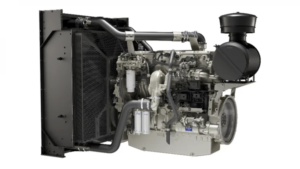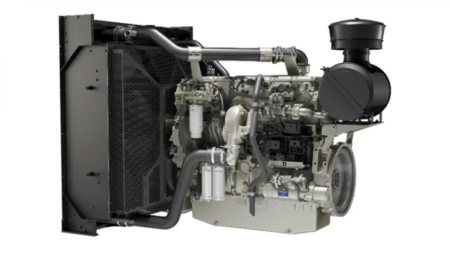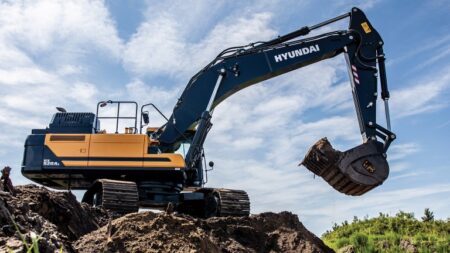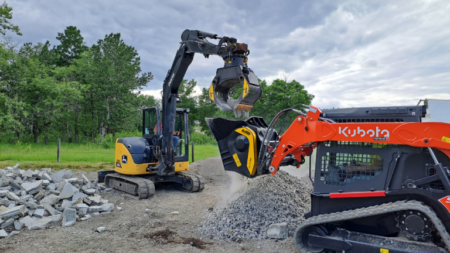Bray Construction photo
The $5B mile includes major investments in public infrastructure, as well as commercial, residential and office projects.
A dramatic transformation of northern Kentucky is slowly unfolding, as construction crews continue work on the $5 billion mile. The string of projects is a mix of private and public development in Covington and Newport along the Ohio River and opposite downtown Cincinnati.
“They involve multiple cities, three counties and two states,” said Tom West, director of economic development of the city of Covington. “Putting those all together under one banner makes it as large, if not larger, than the Blue Oval automobile battery plant being built in western Kentucky. Having this many investors, planners, owners, regulators and governments involved definitely adds more complexity, but also brings sustainability, creativity and broad ownership to our mile.”
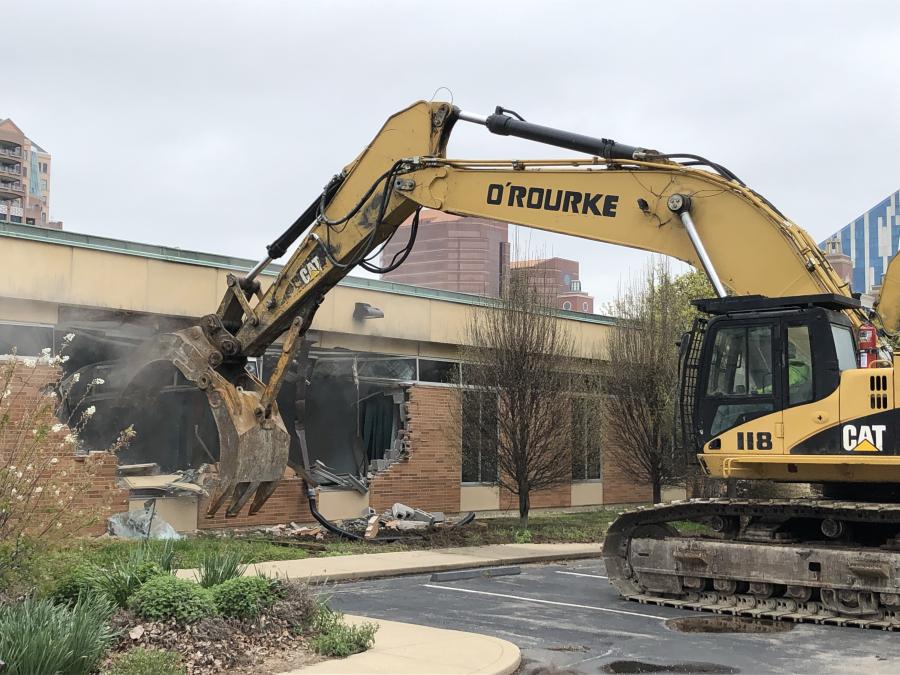
Bray Construction photo
The $5B mile includes major investments in public infrastructure, as well as commercial, residential and office projects.
“It’s rare that so many of these opportunities coincide at once in such a small area,” West said. “In Covington, the availability of 23 acres of prime riverfront property is making it possible for this community to rebuild an entire urban neighborhood.”
Projects include a new interstate bridge and corridor connecting Kentucky with Ohio; the Covington Central Riverfront (CCR); a complete streets redesign of Fourth Street in Covington; a new replacement bridge spanning the Licking River connecting Covington with Newport; the Ovation mixed-use development in Newport; and the renovation of the Newport on the Levee entertainment complex.
The project has been described as the largest concentration of public and private investment anywhere in the United States.
“If you take into account the Brent Spence Bridge Corridor and all of the investments happening in Covington and Newport, that adds up to at least $5B,” said West. “Then, if you add to that projects on the Ohio side of the river under way or planned, that probably doubles the amount of investment all along the same one mile stretch of the river.”
Those Cincinnati projects include a new convention center; a new conference hotel; major renovations to Paycor Stadium; capping Ft. Washington Way; and the completion of The Banks.
West said the CCR project is a particularly exciting opportunity for economic developers.
“Our approach to rebuilding this neighborhood is unique. Instead of selling the land to one developer to build one mixed-use development, requiring an enormous capital stack to even get started, we are taking on the traditional role of the public sector in an urban area. Streets, sidewalks and utilities are owned by public entities, so we are building that street grid, and by doing so, we are providing the framework for smaller, individual developers to build apartment buildings, townhomes, single family houses, office buildings and mixed-use structures.
“Our goal is to facilitate the development of an authentic 21st- century version of the other neighborhoods we all love in Covington, including downtown, Roebling Point, MainStrasse Village and Ritte’s Corner. This approach allows developers of every size a chance to buy a parcel and create their part of the new neighborhood. It also offers multiple bankers and investors an opportunity to get involved.”
Within the mile, Ovation is well under way; the renovation of Newport on the Levee has begun; the state is acquiring property for the Brent Spence Bridge Corridor; and the OneNKY building and Covington Life Science Lab is under construction.
In April 2022, the former IRS building on the CCR project site was demolished, paving the way for the next chapter of development.
“The IRS provided livelihoods for thousands in the region for decades, so it was bittersweet to see the symbol of that economic engine close,” said West. “But seeing the building come down served as a significant step toward returning this land to the people of Covington and the creation of a new neighborhood to replace the one that existed before the Internal Revenue Service building.”
West was quick to point out, “The $5B mile is not just the CCR. The biggest chunk is the $3.8B investment being made by the U.S. government, and the states with the Brent Spence Bridge. CCR is probably a little less than $1 billion, and the vast majority of that will be from private developers.”
Even so, Covington Mayor Joe Meyer called CCR one of the greatest challenges a city can undertake. He recalled gathering with other dignitaries to mark the start of construction on the northern half of the site.
“It was a symbolic day because many of us had children or grandchildren help with the groundbreaking shoveling activity. This is a major investment in the future, and they’ll get the full benefit of what we’re doing today.”
Meyer noted the city went through an extensive planning process asking residents about their vision. The most important value was reintegrating that area of the city into the surrounding neighborhoods.
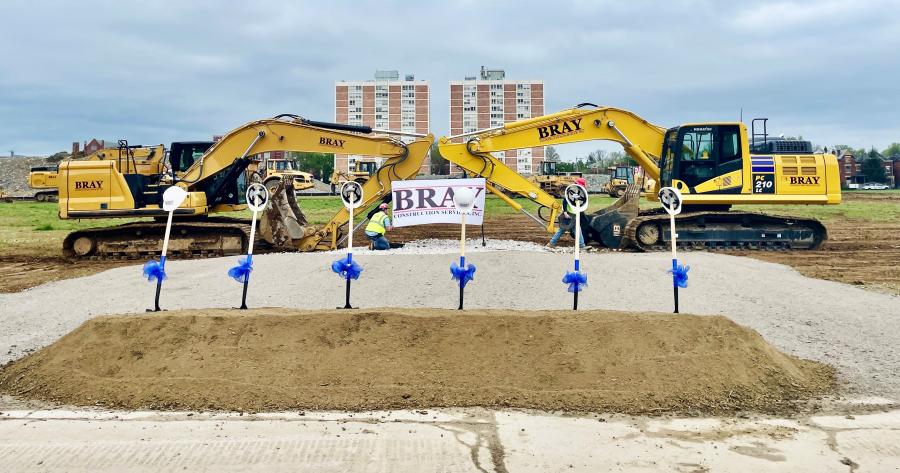
City of Covington photo
“We wanted to respect the history of the original neighborhood and create a 21st-century version of an urban neighborhood. Our community wanted to have the texture, feel and connection to the rest of the city neighborhoods, with a diversity of styles and architecture.”
Elizabeth Wetzel, director of special projects and intergovernmental affairs for the city of Covington, echoed that sentiment.
“What is now the CCR site near the Covington riverfront was once a neighborhood of 160 houses and businesses. When the federal government bought the demolished site for one dollar from the city in the mid-1960s, it built an enormous one-story IRS facility and erected a fence around the building and surface parking lot. This not only erased an entire neighborhood but created a physical barrier between surrounding business districts and neighborhoods.”
When the IRS facility closed in 2019, officials repurchased the site from the federal government and secured an EDA grant to work with the architecture firm KZF to design the public infrastructure to support a new mixed-use neighborhood and multi-modal transportation.
“We aren’t just restoring the pre-IRS street grid, we’re working with Bray and utility providers to separate the storm and sewer mains; install a new electric and fiber grid; and elevate the street level toward the levy to allow for structured parking beneath, taking advantage of riverfront views from new public park space,” said Wetzel.
“Our work is providing the backbone for private and institutional development that’s going to help define the future for this historic riverfront city.”
Bray Construction Services’ critical infrastructure work on the project requires a mix of Cat track hoes, dozers, compactors and off-road trucks. According to Bray project manager Dylan Lyon, the main challenge for crews so far has been the elements.
“We’ve lost [a significant amount of time] due to weather events. We had roughly a total of four inches of rain for April and six-and-a-half inches in May. Weather is an ongoing challenge in this line of work and can be unpredictable at times. Bray will continue to adjust accordingly to whatever Mother Nature throws our way.” Bray Construction is currently 15 percent complete with Phase 1 infrastructure. The project includes building streets and sidewalks, excavation, embankment and importing of clay material from construction sites located around the tri-state area to build the site to the proposed elevations.
The work includes storm, sanitary sewer, underground electric, communication and water line installation to service the different development lots, as well as installation of the concrete sidewalks, curbs, asphalt, landscaping and site furnishings.
Before work began, the site was mostly a gravel and grass field. Construction began in April and is scheduled to be completed during the summer of 2025.
Lyon said playing a part in a once-in-a-generation opportunity is a privilege.
“As a company that lives and works in northern Kentucky, it’s an honor to be a part of this project. We look forward to the opportunity to contribute our expertise and dedication towards its success.”
According to Covington city manager Ken Smith, residents may not fully appreciate the dramatic undertaking that requires the input of so many players.
“Folks are definitely aware of most of the projects individually, but I suspect not many have considered what’s happening in the aggregate. These developments are for all intents and purposes contiguous, and when combined, they represent the largest investment ever in northern Kentucky’s urban core.
“We have intentionally designed the CCR development to be a complete neighborhood with restaurants, shops, entertainment, offices and perhaps most importantly, greenspace. We are taking what was a walled-off island separating our historic areas with our downtown and riverfront and turning it into a community that connects people and neighborhoods.”
Also included in the $5B mile project is a three-arch bridge design that was announced late last year. The Fourth Street/KY 8 Licking River Bridge project will add a fourth lane, update bike and pedestrian connections, boost safety for all users and lift current weight restrictions for large vehicles.
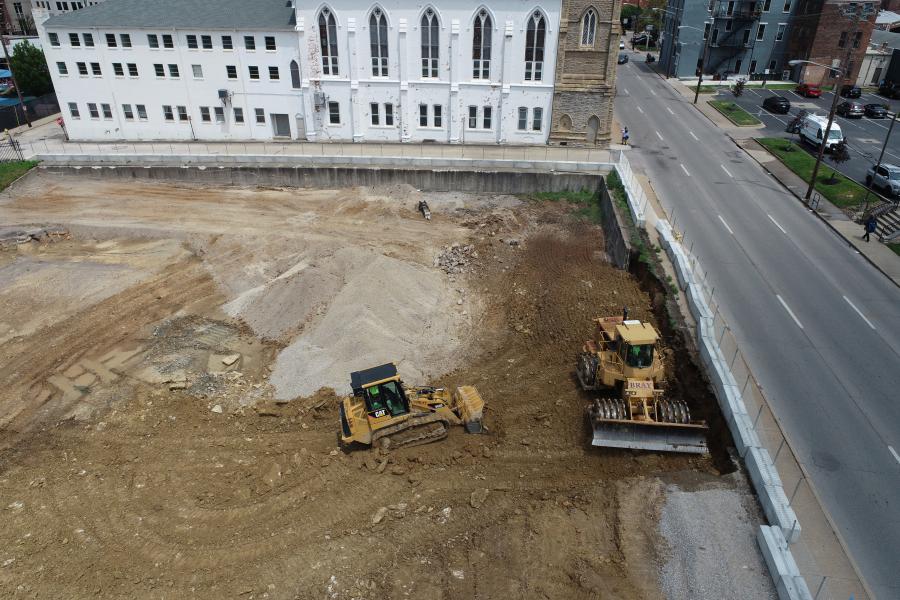
Bray Construction photo
PCL/Stantec/Rosales is the design-build team contracted by the Kentucky Transportation Cabinet (KYTC). KYTC public information officer Jake Ryle said utility relocation work is expected to begin this summer.
“A construction timeline is still being refined by the project team. KYTC will announce those details once they have been finalized. A final cost for the bridge has yet to be determined and is dependent on further design refinement.”
The KY 8 Licking River Bridge, built in the 1930s, is a critical connection for commuters, pedestrians, bicyclists and freight traveling between Covington and Newport. The structure has exceeded its original design life and needs major updates to meet the capacity and connectivity demands of surrounding communities.
For West, the $5B mile is a tremendous investment in the future. Witnessing CCR infrastructure work alone is like nothing he’s ever experienced.
“My educational background is in community planning, and the one thing I have always disliked about my profession is that too often, plans sit on shelves and collect dust. Seeing them being implemented is a thrill like no other.” CEG
Read the full article here


